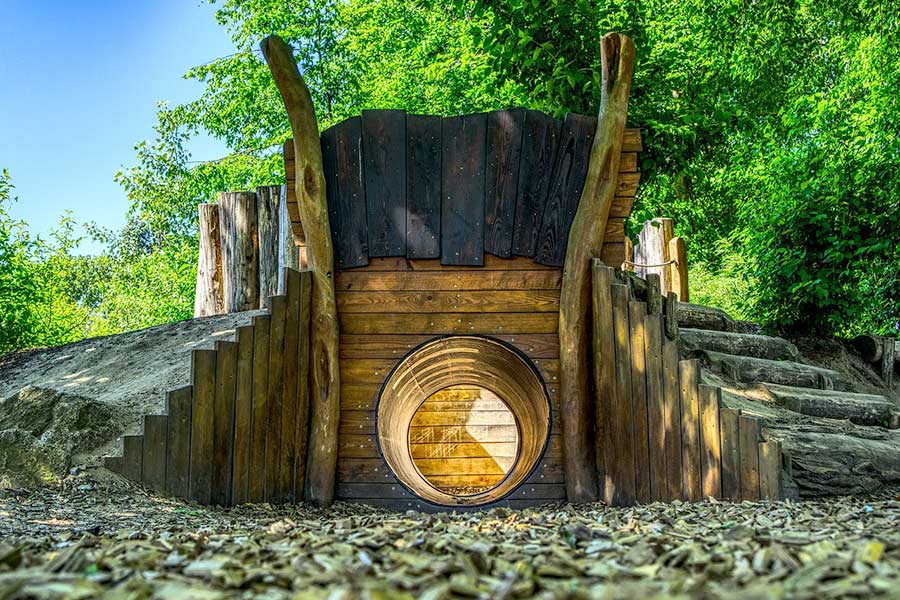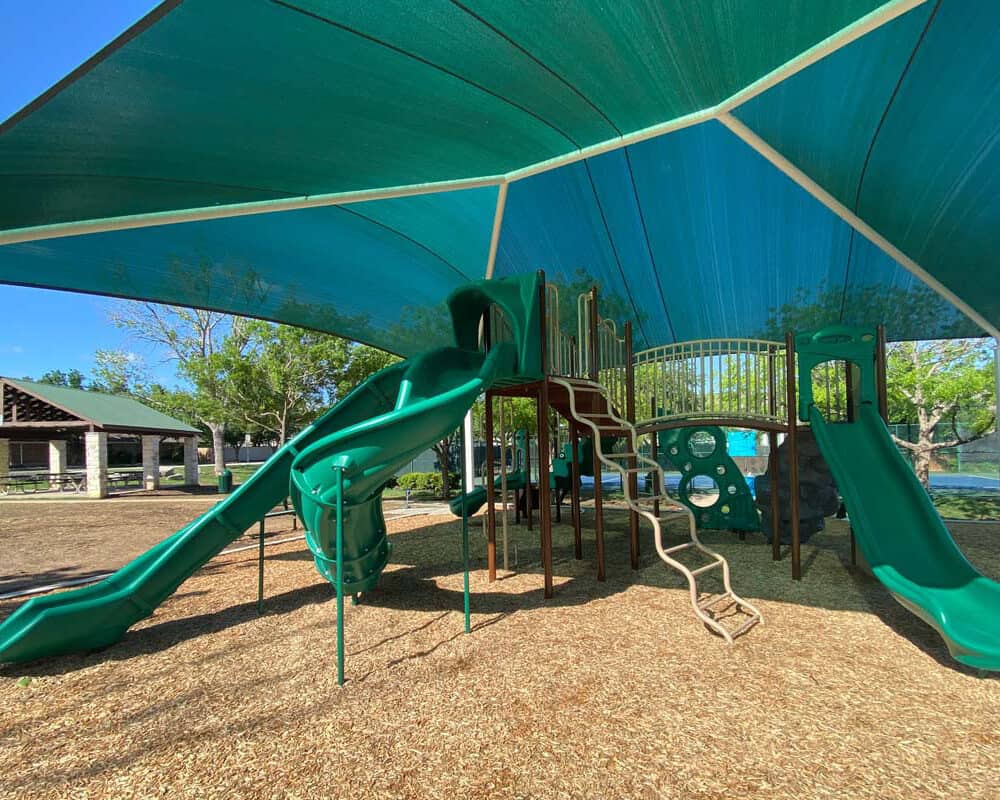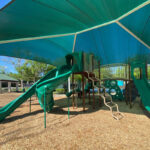Nature is one of the most beautiful and breathtaking phenomenons in our world. Humans have always indulged in nature in many ways, especially by playing in it. In order to harness this natural human proclivity, parks and playgrounds are beginning to incorporate nature into their designs. There are lots of techniques for capturing a natural essence in a park or playground in order to serve the community as a vessel for enjoyment. Here are a few ways to incorporate nature into a playground design.
1. Reusing Natural Materials
Reused natural materials can often take the form of wood. Many parks utilize a technique in which they reuse wood planks, fence materials, and tree stumps. These wood materials allow for children’s imaginations to become more engaged. To a child’s mind, a wooden plank or stump may a spaceship, horse, train, or anything else imaginable. Some parks even built a unique checkerboard structure with tree stumps to further engage people’s minds. Imagined as an obstacle course, lily pads, and other things, designs like this are exciting for children and adults alike.
2. Houses and Shelters
The addition of houses and shelters can provide a place of escape for children looking to take a break from sunlight. Just as hamlets in a fantasy village, the huts can be created using an existing tree canopy. You can accompany these huts with different varieties of flowers like day lilies, snapdragons, and ferns to create an atmosphere of natural liveliness. This can also help create a fantasy theme for the playground, which will further engage children’s imaginations.
3. Incorporating Water
Water is a primary contributor to life and can be used within a park’s structure to heighten the experience. It can be placed near or around sand to allow park-goers a place to create a sandcastle (read more about how to keep a playground sandbox safe). Although water is an appealing addition to a park, it should never be stagnant. Stagnant water is an incubator for many harmful types of bacteria and can pose a threat to anyone near it. The advantages of water in a park are plentiful as long as the water is flowing. There can even be a section of the park that features a water-dumping mechanism to cool off park-goers during the summer.
4. Fun Fences
Fences often serve as borders and symbolize off-limit places. Humans, especially children, often feel an urge to go places that they shouldn’t. A fun way to release this desire and add a cool feature to a playground is to put giant holes in fences, allowing children to run through them as they play games like cat and mouse. These fence breaches invite a certain amount of playful deception and mischief due to a widespread inherent desire to go off the border and enter a forbidden side. This addition to the park is in the interest of adventurous children.
5. Large Rocks
The act of climbing on top of things is widely known as a fun and empowering activity. The inclusion of borders gives kids a platform to climb and have fun. Depending on the level of authenticity of the park, the boulders can be real or designed. Authentic rocks have sharp edges that can pose a threat to children climbing on them. Safer than real boulders, custom boulders are fun for children and provide a nice aesthetic.
Need more ideas for incorporating nature into your playground design? Check out the example below of Jester Park’s Natural Playscape, presented by Iowa PBS on YouTube. It makes great use of flowing water alongside rocks and wooden elements, creating a safe yet lively natural environment:






